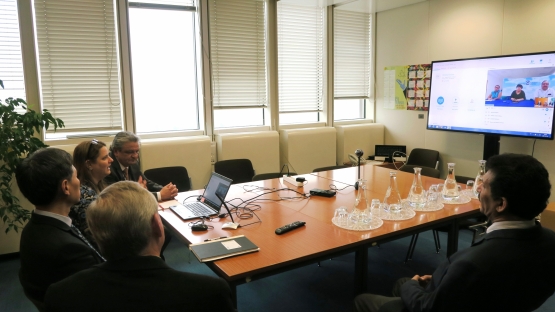More energy analysts in Member States develop their skills in integrated energy planning and receive technical guidance for conducting national energy studies, through the IAEA’s distance learning services.
A recent e-training session on the IAEA’s Model for Analysis of Energy Demand (MAED) attracted 116 participants from 21 countries in Asia, Africa, Latin America and Eastern Europe. During the distance learning course from 13 to 24 March, IAEA energy analysts offered initial training on the use of this analytical tool. MAED supports projecting future energy demand based on targets for socioeconomic, technological and demographic developments in a country or a region.
Through online instruction, scientists and engineers from energy ministries, electric utilities, and regulatory bodies, received hands-on training in designing models, preparing data and interpreting results. These skills are key to applying MAED for national energy demand studies.
“MAED model will help us estimate the electricity demand in various sectors and implement that analysis in our activities,” said Dr Alfredo Rodríguez, a participant from Mexico’s National Institute of Electricity and Clean Energies (INEEL).
David Shropshire, Head of the IAEA Planning and Economic Studies Section, said the e-training extended the Agency’s outreach for capacity building to Member States by building participants’ modelling skills and preparing them for additional classroom training. “The feedback we receive from them during these sessions is incredibly important for us to further improve our training services,” he added.
MAED model will help us estimate the electricity demand in various sectors and implement that analysis in our activities.




